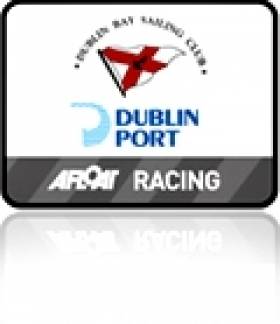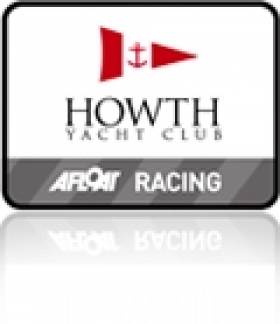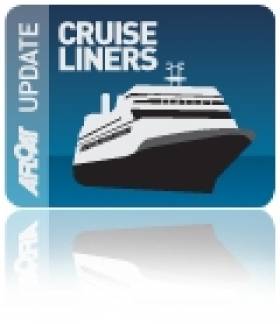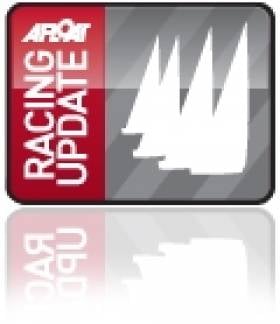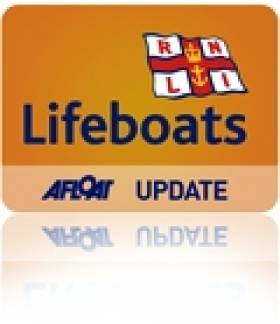Displaying items by tag: Dublin Bay
Day Two: Flannigan Takes the SB3 Lead
Leaders from day one Ben Duncan, Brian Moran and Ric Morris had a more testing day with some interesting action at the start of race 4 and 5 leaving them playing catch up. Scoring 6,11,7 they slip back to second tied with Sean Craig (5,3,10). Winner of todays final race Andrew Algio, Garry Houghton and Richard Knatchbull added a 13th and a 6th to a win in the final race to move up to 4th. Ross Vaughan, Rory Fitzpatrick and Ryan Seartons 11, 1, 33 was enough to move them up to 5th.
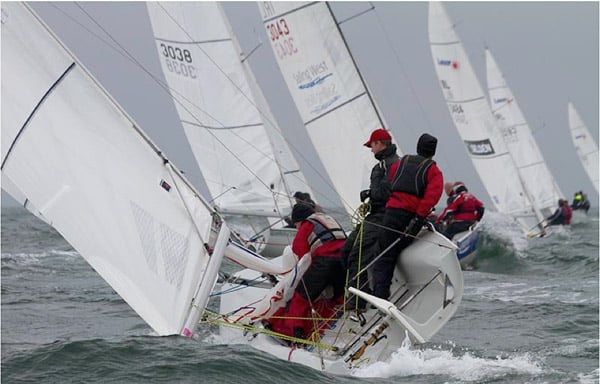
Squally conditions on Day two of the SB3 Nationals. Photo: Gareth Craig. More photos HERE.
HOWTH YACHT CLUB. SB3 NATIONALS (O'ALL) 04/09/2010 SB3: 1, McCreadys Gill Team Gareth Flannigan RUYC (13.00); 2, Sharkbait Ben Duncan HYC (21.00); 3, Yeti Sean Craig RStGYC (21.00); 4, Flutter Andrew Algeo RStGYC (34.00); 5, Toucan 3 Ross Vaughan RNIYC (38.00)
Day Two photos by Gareth Craig HERE.
Susele is DBSC Dragon Race Winner
BENETEAU 31.7 - 1. Bluefin Two (M & B Bryson), 2. Prospect (Chris Johnston), 3. Fiddly Bits (Kevin Byrne et al)
BENETEAU 31.7 Echo- 1. Fiddly Bits (Kevin Byrne et al), 2. Bluefin Two (M & B Bryson), 3. Violet Flame (B.Murphy/L.Osbourne)
CRUISERS 0 Echo - 1. WOW (George Sisk), 2. Tsunami (Vincent Farrell), 3. Tiamat (Tim Costello)
CRUISERS 0 - 1. WOW (George Sisk), 2. Tsunami (Vincent Farrell), 3. Tiamat (Tim Costello)
CRUISERS 1 Echo - 1. Gringo (Tony Fox), 2. Jura (Barry McCabe), 3. Raptor (D.Hewitt et al)
CRUISERS 1 - 1. Gringo (Tony Fox), 2. Raptor (D.Hewitt et al), 3. Jalapeno (Dermod Baker et al)
CRUISERS 2 Echo - 1. Free Spirit (John O'Reilly), 2. Bendemeer (Gerald Kinsella), 3. Jawesome 11 (V.Kennedy/M.Dyke)
CRUISERS 2 - 1. Jawesome 11 (V.Kennedy/M.Dyke), 2. Bendemeer (Gerald Kinsella), 3. Peridot (Jim McCann et al)
CRUISERS 3 Echo - 1. Jammie Dodger (J.H & D.O'Neill), 2. Wanderlust (E.& J.Melvin), 3. Chouskikou (R.Sheehan/R.Hickey)
CRUISERS 3 - 1. Supernova (K.Lawless et al), 2. Asterix (J.Counihan/F.Meredith), 3. Cries of Passion (Bryan Maguire)
CRUISERS 4 - 1. Ghrazel (Charles Pearson), 2. Rascal (K.Burke/S.Milner)
DRAGON Race 2- 1. Chiang (Iain Finnegan), 2. Zu (P.Dee et al), 3. Zinzan (Daniel O'Connor et al)
DRAGON Race 1- 1. Susele (Michael Halpenny), 2. Phantom (D.Williams/P.Bowring), 3. Zu (P.Dee et al)
FIREBALL Race 1- 1. Licence to Thrill (Louis Smyth), 2. Blind Squirrel (Frank Miller), 3. Elevation (N.Colin/M.Casey)
FIREBALL Race 2- 1. Licence to Thrill (Louis Smyth), 2. Blind Squirrel (Frank Miller)
FLYING FIFTEEN Race 1- 1. Hy5ive (D & S Gorman), 2. Snow White (Frank Burgess), 3. The Gruffalo (Keith Poole)
FLYING FIFTEEN Race 2- 1. Hy5ive (D & S Gorman), 2. Rollercoaster (Tom Murphy), 3. The Gruffalo (Keith Poole)
GLEN - 1. Glenluce (D & R O'Connor), 2. Glenshesk (L.Faulkner et al), 3. Glengesh (G.Sands/B.O'Connor)
IDRA 14 FOOT Race 1- 1. Dunmoanin (Frank Hamilton), 2. Sapphire (Lorcan O'Sullivan), 3. Dart (Pierre Long)
IDRA 14 FOOT Race 2- 1. Dunmoanin (Frank Hamilton), 2. Dart (Pierre Long)
MERMAID Race 1- 1. Jill (P.Smith/P.Mangan), 2. Kim (D Cassidy), 3. Aideen (B.Martin/D.Brennan)
MERMAID Race 2- 1. Jill (P.Smith/P.Mangan), 2. Kim (D Cassidy), 3. Aideen (B.Martin/D.Brennan)
PY CLASS - 1. Brendan McConville (Wayfarer)
RUFFIAN 23 - 1. Ruff N Ready (Ann Kirwan et al), 2. Diane ll (Bruce Carswell), 3. Ruff Nuff (D & C Mitchell)
SIGMA 33 Race 1- 1. White Mischief (Timothy Goodbody), 2. Rupert (R.Lovegrove/P.Varian), 3. Pippa lV (G.Kinsman/K.Blake/M.O'Brien)
SIGMA 33 Race 2- 1. White Mischief (Timothy Goodbody), 2. Rupert (R.Lovegrove/P.Varian), 3. Pippa lV (G.Kinsman/K.Blake/M.O'Brien)
SQUIB Race 1- 1. Femme Fatale (Joe O'Byrne), 2. Nimble (Brian O'Hare), 3. Periguin (N.Coakley/J.Redahan)
SQUIB Race 2- 1. Nimble (Brian O'Hare), 2. Perfection (Jill Fleming), 3. Femme Fatale (Joe O'Byrne)
WHITE SAIL CRUISERS Echo - 1. Finnegans Wake (T.Rowlands et al), 2. Windshift (R O'Flynn et al), 3. The Great Escape (P & D Rigney)
WHITE SAIL CRUISERS - 1. Calypso (Howard Knott), 2. Act Two (Michael O'Leary et al), 3. Windshift (R O'Flynn et al)
Government Begins Review of Irish Ports
Minister for Transport Noel Dempsey T.D. today announced the launch of a national ports policy review with the publication of a consultation document.
There are ten State commercial port companies established and operating pursuant to the terms of the Harbours Acts 1996 - 2009; Cork, Drogheda, Dublin, Dundalk, Dún Laoghaire, Galway, New Ross, Shannon Foynes, Waterford and Wicklow.
It is estimated that approximately 99% by volume of all goods traded into and out of Ireland are handled at our ports. Dublin Port is the State's biggest port handling approximately 44% of all tonnage in 2009. Cork and Shannon Foynes were the second and third biggest ports respectively in 2009.
Today's consultation document provides stakeholders with an opportunity to help shape future ports policy.
Speaking today Minister Dempsey said; "In 2005 our national Ports Policy Statement outlined national ports policy in a single document for the first time. Since then the commercial, technological, and regulatory environment in which Irish ports operate has changed dramatically, both domestically and globally. It is now time to carry out a review of this policy framework to ensure that our ports are properly positioned for the future.
Since 2005 our ports have experienced both record highs and more recently sharp declines in tonnage throughput. The ports face considerable challenges and it is important that national policy helps address these. The indications are that the country's return to economic growth will be export led. In this regard, it is vital that the ports are in a position to facilitate this and to make their contribution to improving national competitiveness.
I would encourage all interested parties to engage fully in this important consultation process."
The consultation document provides an overview of developments in the sector since 2005 and poses a number of questions on the continued validity and future direction of national ports policy.
Important issues addressed in the document include planning and funding future port developments, the role ports have to play in delivering the "Smarter Travel" agenda, competition within the sector and the corporate governance regime for port companies.
The public consultation period is scheduled to continue until Friday 29th October 2010.
The full Consultation Document is available for download below
To make a submission click HERE
Read Tom MacSweeney's Island Nation blog on the importance of ports HERE
Crazy Horse Romps Home in Howth
HOWTH YACHT CLUB. SEPT MINI WED (RACE) 01/09/2010 Class 1 IRC: 1, Crazy Horse Reilly/Chambers; 2, Makutu Doyle/Others; 3, Storm P Kelly; Class 1 HPH: 1, Makutu Doyle/Others; 2, Crazy Horse Reilly/Chambers; 3, Storm P Kelly; Class 2 IRC: 1, Impetuous Noonan/Chambers; 2, Sunburn I Byrne; 3, Superhero Burne/Banahan; Class 2 HPH: 1, Impetuous Noonan/Chambers; 2, MiniMumm Cobbe/McDonald; 3, Jokers Wild G Knaggs; Class 3 IRC: 1, Gecko K Darmody; 2, Starlet Bourke/Others; 3, Holly B MacMahon; Class 3 HPH: 1, Gecko K Darmody; 2, Rossinver C Scott; 3, Midnight Sun Bolger/Others; White Sails HPH: 1, Cu na Mara C Brown; 2, Force Five R & J McAllister; 3, Cogar K & C Halpin; White Sails IRC: 1, Alphida H Byrne; 2, Force Five R & J McAllister; 3, Savarna Burke/Curtis
Graceful Lady Liner to Visit Dublin
The vessel was launched as Port Sydney in 1955 from Swan Hunter and Wigham Richardson Yards, Wallsend-on-Tyne for Port Line, a subsidiary of Cunard Line. With five cargo holds, the vessel served both the meat trade and carried passengers on liner-route services between the UK and New Zealand and Australia via the Panama Canal.
In 1974, Port Sydney underwent a radical conversion into a luxury passenger cruise ship, despite the exterior appearance the vessel retains a pleasant profile compared to many modern cruiseships. Over the decades the vessel had different owners and several vessel name changes; Daphne, Switzerland and Ocean Monarch.
The most refit was in 2008 and the ship still retains the largest cabins found on any cruise ship today, of the 241 cabins. With spacious cabins for only 550 passengers and attractive appointed public areas and wide exterior decks, the veteran provides a form of cruising that would appeal to classic cruise aficionados around the world.
With a strong and sturdy hull, the vessel has a deep draft which is well suited to an ocean going vessel in handling inclement weather, though the large draft does restrict visiting certain ports and anchorage locations.
Sistership, Princess Danae, formerly Port Melbourne, was also built in 1955 with the second newbuild ordered to the famous Belfast shipbuilders, Harland & Wolff. Princess Danae is slightly smaller at 15,833grt and also made a recent call in Dublin. The sisters form part of a six vessel fleet operated by Classic International Cruises.
Princess Daphne is due to arrive in Dublin after an overnight passage from Plymouth, docking at 08.00 and depart the capital at 17.45hrs. In addition the port expects another cruise-call tomorrow in the form of Prinsendam of 37,983 grt and with over a 800-passenger capacity. The Dutch flagged vessel is operated by Holland America Line and is due to dock around mid-moring and depart at 23.30hrs.
'Fiddly Bits' Wins Tuesday Night DBSC Race
BENETEAU 31.7 - 1. Fiddly Bits (Kevin Byrne et al), 2. Attitude (D.Owens/T.Milner)
CRUISERS 1 - 1. Jalapeno (Dermod Baker et al), 2. Something Else (J.Hall et al), 3. Powder Monkey (C.Moore/M.Byrne)
CRUISERS 3 - 1. Cacciatore (Anne O'Callaghan et al), 2. Chouskikou (R.Sheehan/R.Hickey), 3. Rattler 2 (Austin Whelan)
CRUISERS 4 - 1. Ghrazel (Charles Pearson), 2. Artemis (J.Giles), 3. Maranda (Myles Kelly)
FIREBALL - 1. Blind Squirrel (Frank Miller), 2. Incubus (S Oram), 3. Goodness Gracious (Louise McKenna)
GLEN - 1. Glenmarissa (F.Elmes/W.Higgins), 2. Glenluce (D & R O'Connor)
IDRA 14 FOOT - 1. Dunmoanin (Frank Hamilton)
MERMAID - 1. Aideen (B.Martin/D.Brennan), 2. Kim (D Cassidy), 3. Oonagh (J&M Griffith)
PY CLASS - 1. J Toomey/N Byrne (Laser Vago), 2. Brendan McConville (Wayfarer)
RUFFIAN 23 - 1. Cresendo (L Balfe), 2. Alias (D.Meeke/M.McCarthy), 3. The Sting (Richard O'Keefe et al)
SIGMA 33 - 1. Pippa lV (G.Kinsman/K.Blake/M.O'Brien), 2. White Mischief (Timothy Goodbody), 3. Rupert (R.Lovegrove/P.Varian)
SQUIB - 1. Tais (Michael O'Connell), 2. Periguin (N.Coakley/J.Redahan), 3. Coorse & Fine (W.Goodbody)
Fitzpatrick and McDonald Win Inaugural Liffey Skiffy
Crashes and capsizes were on order for spectators from the first start with Ed Butler and Dermot Mc Murrough suffering a mainsail tear from the first start. Nin O'Leary also made the most of a capsize by back flipping from the boats wing once semi turtle! Many photos were made available from the event with the most notable making the front page of Saturday's Irish Times newspaper!
Many thanks go to the event sponsors OnBoard Surf Snow Sail, PR Reilly Car accessories as well as Dublin Port Company, Dublin Docklands Authority, The National YC, St. Patricks Rowing Club and the International 49er Class Association.

Action on the Liffey. Photo: Harry Hermon
Dun Laoghaire Lifeboats Assist Swamped Yacht
Both lifeboats at Dun Laoghaire RNLI station were launched this afternoon when a 20 foot yacht with two persons on board got into difficulty close to a rocky shoreline on Dublin Bay.
The incident occurred around 5pm when the Flying 15 keelboat became swamped by the choppy conditions in the area known as Scotman's Bay between Dun Laoghaire and Sandycove. A sea-angling boat, the Brandon Lisa and a local rigid inflatable (RIB) went to the assistance of the casualty.
Volunteer crews of both lifeboats were paged by the Irish Coastguard service's 'MRCC Dublin' at 5.08pm and launched 12 minutes later.
Arriving at the nearby scene, the two occupants were trying to drop the sails and secure their equipment. Both were wearing buoyancy aids and were
uninjured.
The inshore lifeboat assisted preparing the casualty vessel for towing by the RIB while the All-weather lifeboat 'Anna Livia' provided an escort to the inner-coal harbour in Dun Laoghaire where the boat was brought ashore.

Lifeboat Rescues Flying Fifteen Crew
A rescue operation to recover a Flying fifteen keelboat and its two crew is underway on Dublin bay this evening. The 20-foot sailing boat capsized in strong north westerly winds in Scotsman's Bay. Both Dun Laoghaire's inshore and offshore lifeboats and a local RIB is at the scene.
Related Safety posts
RNLI Lifeboats in Ireland
Safety News
Rescue News from RNLI Lifeboats in Ireland
Coast Guard News from Ireland
Water Safety News from Ireland
Marine Casualty Investigation Board News
Marine Warnings



























